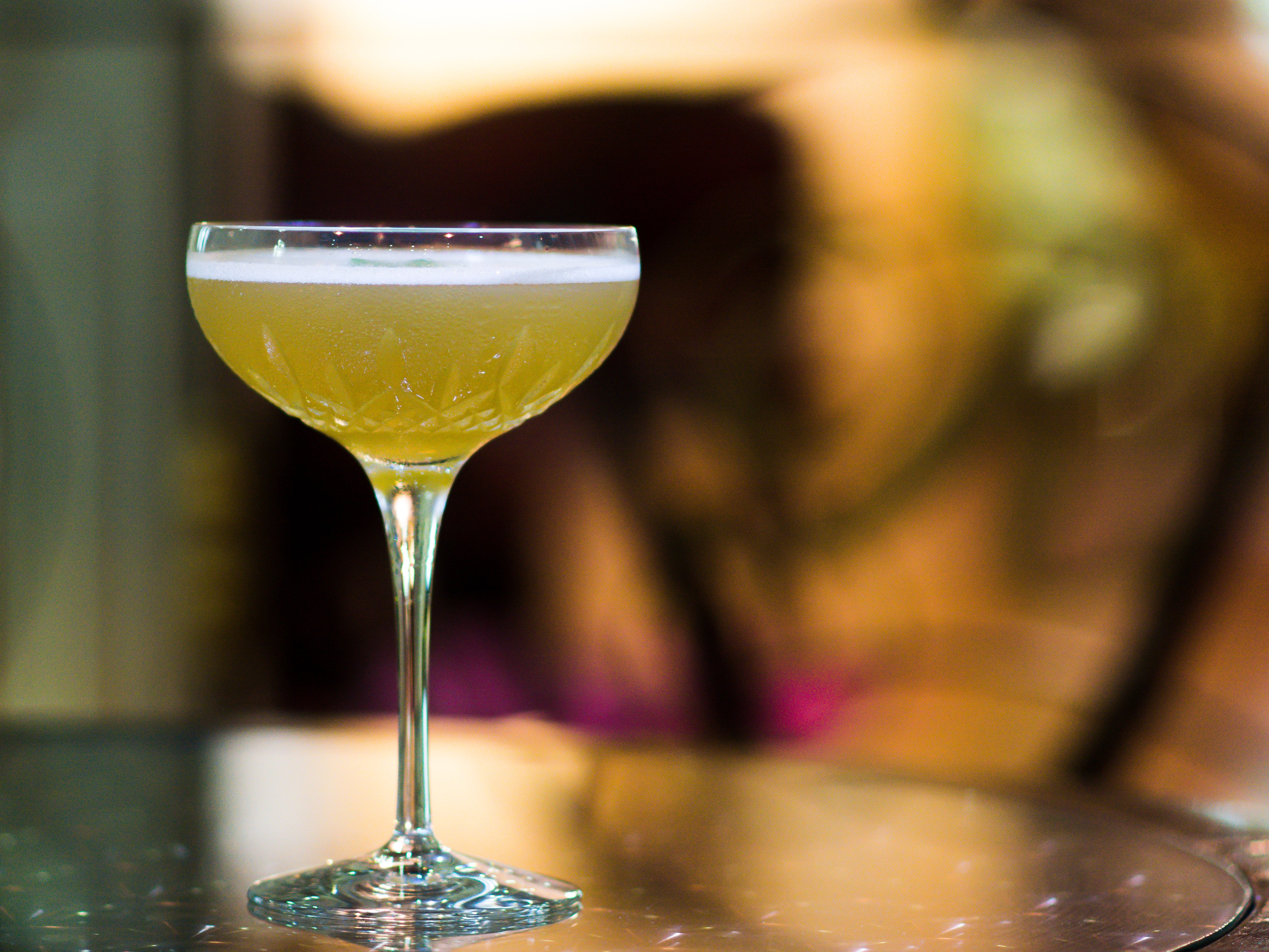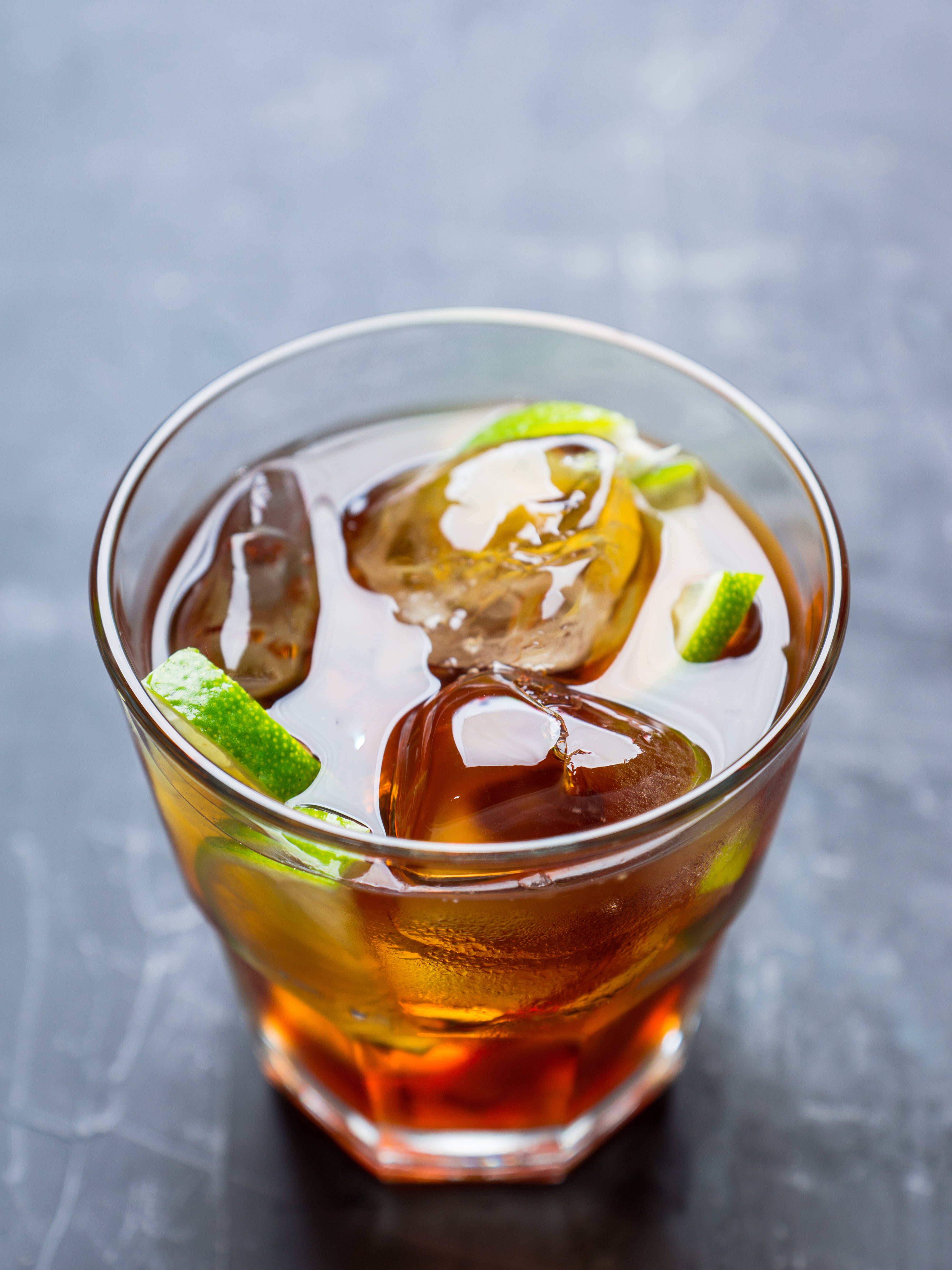Two cider cocktails to celebrate the season
Added to cocktails, sipped on its own or even turned into a syrup, this drink with a long history is anything but simple, says Rebekah Peppler

Your support helps us to tell the story
From reproductive rights to climate change to Big Tech, The Independent is on the ground when the story is developing. Whether it's investigating the financials of Elon Musk's pro-Trump PAC or producing our latest documentary, 'The A Word', which shines a light on the American women fighting for reproductive rights, we know how important it is to parse out the facts from the messaging.
At such a critical moment in US history, we need reporters on the ground. Your donation allows us to keep sending journalists to speak to both sides of the story.
The Independent is trusted by Americans across the entire political spectrum. And unlike many other quality news outlets, we choose not to lock Americans out of our reporting and analysis with paywalls. We believe quality journalism should be available to everyone, paid for by those who can afford it.
Your support makes all the difference.Autumn is here and, despite the aggressive push for pumpkin spice, it’s unequivocally apple – and cider – season.
At its most basic definition, cider is fermented apple juice. But like wine, it can skew tart, sour, dry, bitter, sweet, wild, herbal, acidic, sparkling with big bubbles or fine, fizzy bubbles, or not sparkling at all. Some ciders aren’t even made from apples, but pears or other pomaceous fruit. If you’re a cider aficionado, there is always a new expression to try; if you’re newer to the world of ciders, it’s safe to assume that, if you taste enough, you’ll find one suited to your palate.
Cider has a long history. Records of cidermaking date to the Roman empire, and many historians believe the Romans discovered it while invading what is now modern day England. After the Norman conquest of England in 1066, the drink spread across Europe, with regions developing different production methods and traditions influenced by terroir, apple varieties and local customs.
To that end, traditional English ciders often lean dry and tannic; French cidre tends to be sweeter, lower in alcohol and light in sparkle; and Spanish sidra is frequently funky, tangy and unfiltered. While close in proximity, the northern Basque and Asturias regions – Spain’s two main cidermaking areas – produce different styles: Basque cider is typically more acidic and savoury; Asturian cider fruitier. A similar contrast plays out in two of France’s neighbouring cider regions, Brittany and Normandy. Breton cider is often drier and a bit stronger than off-dry, complex Norman bottles.
In North America, cider was extremely popular in the 17th century, but the once-bracing drink fell out of favour amid a rising preference for beer and a move to urban development in the mid to late-19th century.
By the end of Prohibition in 1933, many of the orchards producing small tannin-rich, often-astringent cider apples were destroyed and replaced with sweeter, more palatable table apples, and the cider industry didn’t recover in the way the beer and spirits industries eventually did. But since the late 1990s, US cider has moved from post-Prohibition’s candy-sweet iterations, to serious bottles that employ heritage and contemporary techniques and craft ciders that range from bone dry to juicy and delightfully funky.
Enjoyable on its own as an aperitif or served alongside a meal, cider has also found its way into cocktails. Andra “AJ” Johnson, beverage director and managing partner at Serenata in Washington DC, and a founder of DMV Black Restaurant Week, likens its role in mixed drinks to that of sparkling wine.
With the addition of sparkling wine, she said, “you’re giving your cocktail another dimension, adding acidity, a bit of tannin quality, balancing the richness or sweetness of the cocktail’s base, and cleansing your palate at the same time”.
Ciders, she added, “are going to act the exact same way”.
Start simple, and combine cider and vermouth in equal parts over ice. For another easy option that’s low-ABV (alcohol by volume), swap wine for cider in a Kir cocktail, and call it a Kir Breton. Or, if you’re looking for something with more spirit, top a base of gin, sherry and orange liqueur with an effervescent glug of dry cider.
“It’s all about creating balance,” she said. “It is not something to be overthought.”
The best way to figure out which cider is most balancing is to taste a bunch and experiment. Johnson suggests using a richer cider to counter a more fruit-forward base. Pair a sweeter base with a drier-leaning cider, or vice versa.
Since many ciders are sold in larger-format bottles, you can start the evening with a cider-based cocktail or two, then drink the rest of the bottle alongside a meal. If you have any left over at the end of the night, Johnson suggests making a cider syrup by combining the remaining cider with sugar in a 1:1 ratio and gently “throwing” or pouring the mixture back and forth between two shakers until the sugar is fully dissolved.
Store the cider syrup in the refrigerator for up to three weeks, and substitute it for standard simple syrup. Or, if you’re done drinking cider, bring any left into the kitchen and cook with it.
Once you find a cider you like, you can keep pouring it year-round: if history is any indication, the apple, autumn’s quintessential fruit, has staying power.
Gin cidre
By: Rebekah Peppler
Bright, botanical and lightly bubbly, this cocktail is an ideal entry point to fall drinking – and one that can easily take you straight through to spring. Look to a cider that’s dry, light and not overly powerful in acid or funk here: you want the botanicals of the gin and the salinity of the sherry to play an equal role in balancing the drink.
Makes: 1 drink
Ingredients:
3/4 ounce of gin
3/4 ounce of sherry
1/2 ounce of orange liqueur
1/2 ounce fresh lime juice
2 dashes orange bitters
Ice
2 ounces light, dry cider, chilled
Method:
1. In a shaker, combine the gin, sherry, orange liqueur, lime juice and bitters. Add ice, cover and shake vigorously until the drink is well chilled, about 15 seconds. Strain into a chilled cocktail glass and top with cider.
Basque Country

By: Rebekah Peppler
The equal proportions of vermouth and cider make this cocktail especially easy to pour or batch up. Choose a cider with a bit of tartness and funk, and reach for a quality red vermouth. Sweet and slightly viscous, it stands up to and smooths out the cider’s personality. Finally, don’t skimp on the garnish. The orange, olives and peppers should be deployed in a way that feels less like decoration and more like a snack. Drop the skewer straight into your cocktail to impart notes of citrus and brine – or lay it on top to snack on and sip at your leisure.
Makes: 1 drink
Ingredients:
Ice
1½ ounces sweet vermouth
1½ ounces Basque or Basque-style cider
Orange half wheels, green olives (such as Manzanilla), guindilla peppers (also called piparras), for garnish
Method:
1. Fill a lowball glass with ice. Add the sweet vermouth and cider, stir gently to combine. Thread a skewer with an orange half wheel, a few olives and a guindilla pepper, and garnish.
© The New York Times
Join our commenting forum
Join thought-provoking conversations, follow other Independent readers and see their replies
Comments